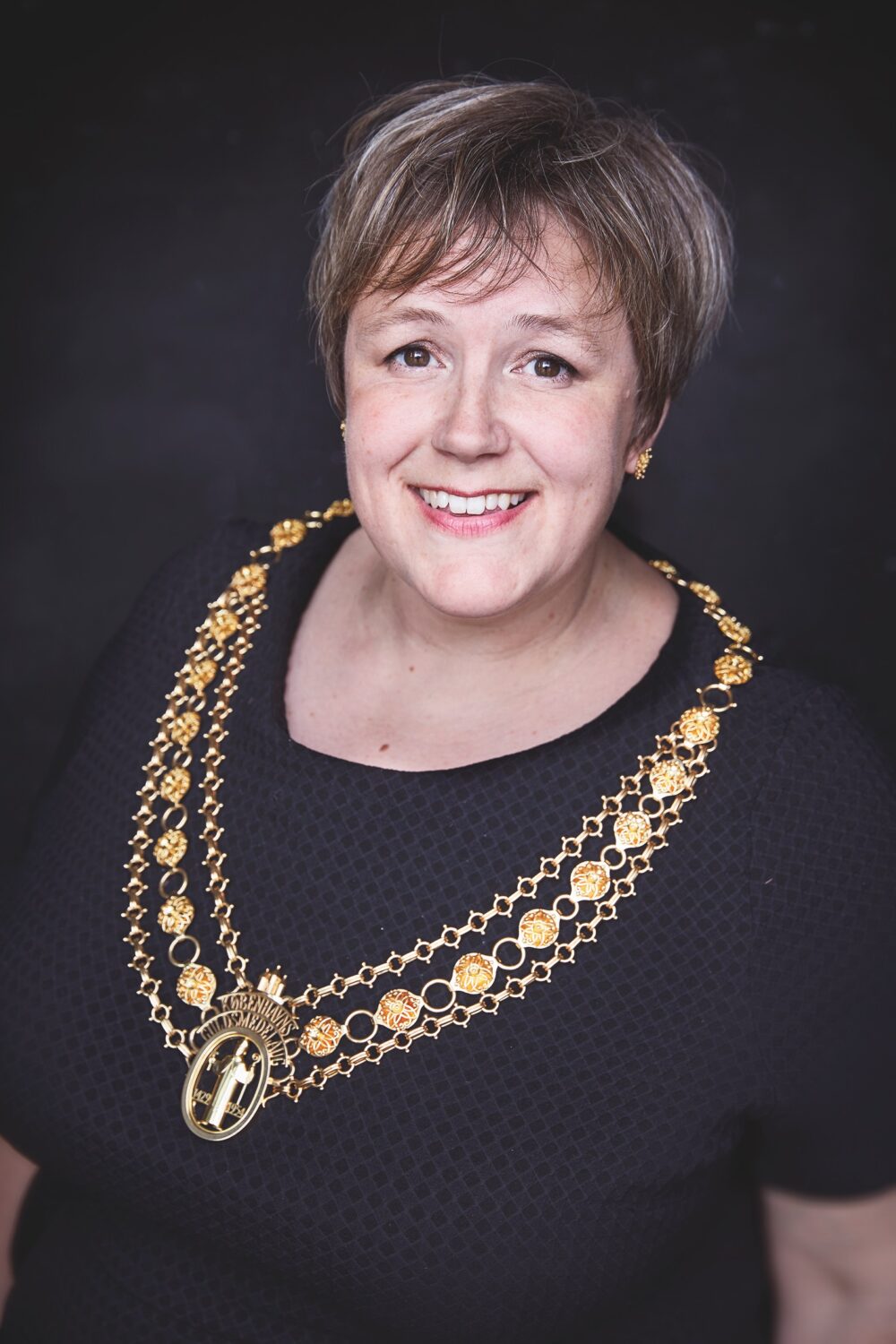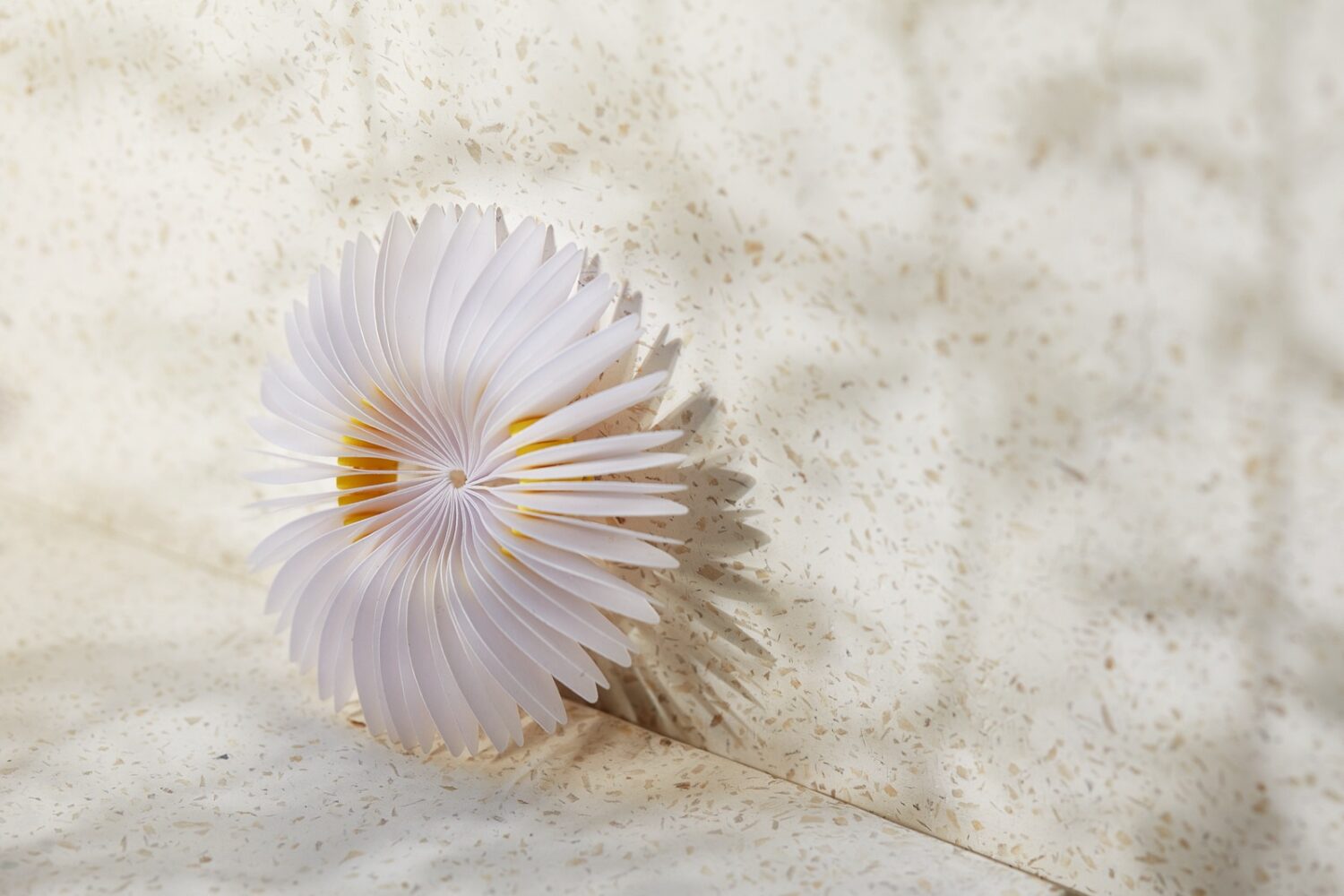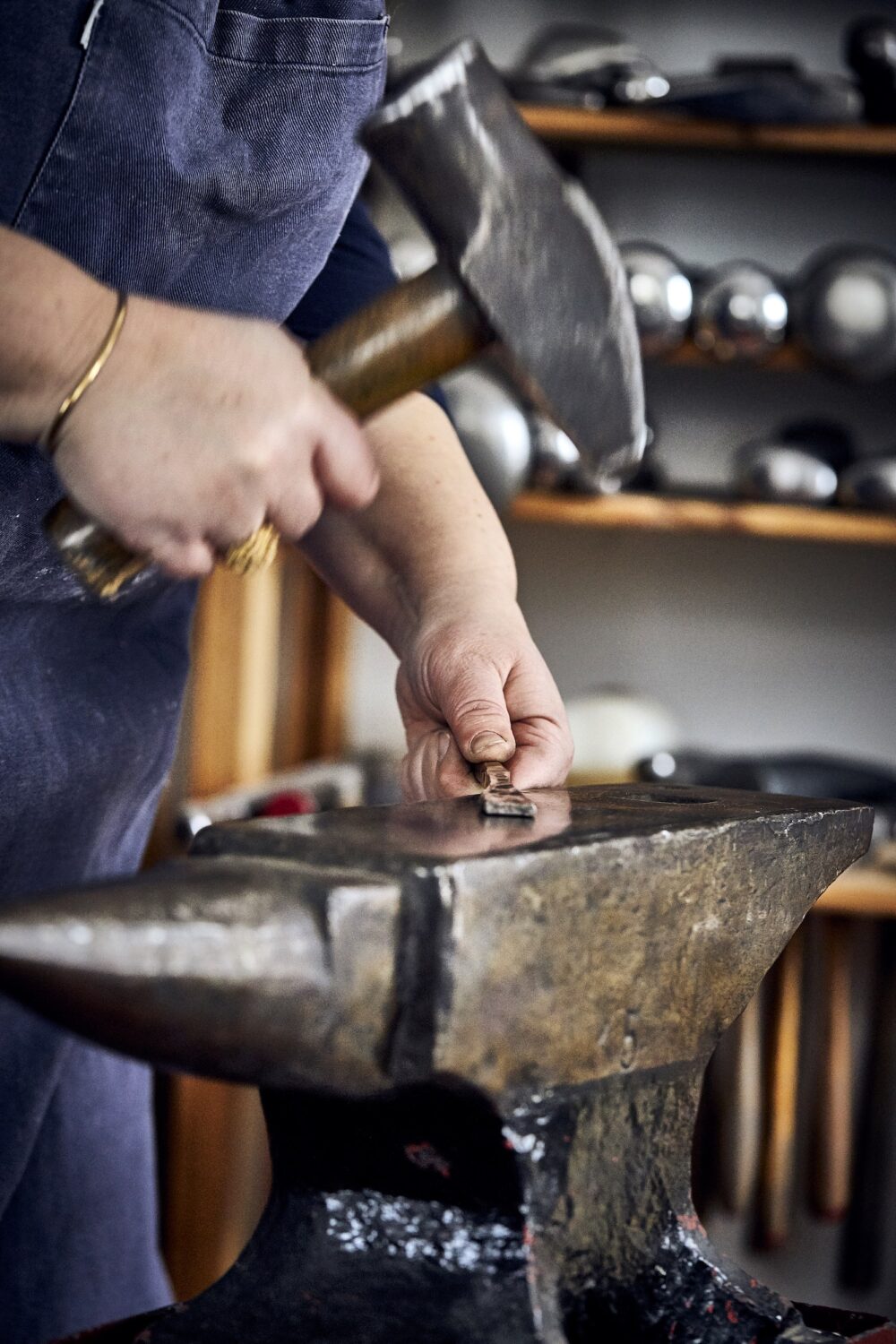Ethical diamonds, jewellery-related commentary on the current woke debate, jewellery and architecture, and a series of modern takes on the classic brooch. It won’t be long until gold, gemstones, and dazzling stories and debates about jewellery and jewellery art will shine throughout Copenhagen. On September 28th, the three-day festival, “City of Jewels”, will begin, where members of the Copenhagen Goldsmiths’ Guild will host no fewer than 33 different events in the form of open workshops, debates, exhibitions, and guided walking tours with jewellery-relevant themes.
‘The purpose of the festival is to show that there are a plethora of small workshops throughout the city that produce jewellery – both commercial and more artisanal in nature. But at the same time, we also want to show that the goldsmith profession and the art of jewellery are very much alive – and relevant today, even considering our long history,’ says the Elder of the Goldsmiths’ Guild, Lone Løvschal.

An Ancient Craft with Cutting-Edge Relevance
While the goldsmith profession has several thousands of years under its belt, the Copenhagen Goldsmiths’ Guild can boast of being one of the world’s oldest craft guilds with nearly 600 years of history. The guild was established in 1429, back then more as a political organization than today, where the association describes itself as a professional, festive, and philanthropic community for about 200 skilled members of all ages, typically based in Copenhagen and its vicinity. Today, one of its purposes is to communicate about the profession to the outside world and to distribute funds to the right recipients.
The profession today is adept at building on its long history with narratives and messages that are relevant for the present and future.
‘Like in all other professions, we focus on sustainability and resources, though the conversation is somewhat different since we don’t discard our used materials – gold, silver, and gemstones. Instead, it’s very much about where the materials come from. Are we sourcing diamonds and precious metals from places we can vouch for? Should we work with natural or lab-created diamonds? It’s a massive discussion – but important and intriguing in a world where many customers expect responsibility,’ says Lone Løvschal.

Brooches with Biodiversity
At the same time, the art of jewellery can also be used to comment on the major issues of our time, says Lone Løvschal, citing goldsmith Kim Buck’s works as examples of pieces that touch upon topics like religion, sexuality, immigration, and economic inequality.
Lone Løvschal herself has also expressed her concern for the global biodiversity crisis in a piece of jewellery.
‘I’m deeply interested in biodiversity, both globally and in my own garden. We have too few bees in cities because they can’t find food. Therefore, I’m working on designing a brooch that resembles a flower and contains seeds of native species. The idea is for the wearer to sprinkle flower seeds wherever they go, thereby promoting species diversity in the urban landscape,’ she explains.
Although the art of jewellery can have a political expression, the Elder emphasizes the relational dimension of jewellery as paramount.
‘Jewellery is a form of communication between people,’ she says. ‘It can tell a deeply personal story, be an heirloom, a love gift, a reminder of a significant day, or a mark of personal achievement. Due to its personal touch, it means a lot to people to think about how it can be passed down through generations.’
Professional Expertise Under Pressure Following Education Closure
Lone Løvschal is not concerned about the justification of the goldsmith profession, but she is concerned about its professional future.
‘The advanced education for goldsmiths and jewelry artists, the Institute for Precious Metals at Copenhagen Business Academy, was closed in 2016, and it’s a significant frustration for us. Not only does it mean that no newly trained jewellery designers and artists are entering the market – but the framework for the profession’s further development has also disappeared, namely the basic research and the establishment of a dedicated teaching staff that can define the framework for the profession,’ says Lone Løvschal.
“I fear that the consistent thread in our profession is disappearing – the discussions about the craft and the style that we, as a major jewellery nation, have built over history. Many go abroad for education, and foreign talents come to our country – but we lack a consolidated, Danish institution for the purpose. We’ve made a significant mark with major companies and jewellery artists on the international stage – but I doubt whether we can continue to do so.”
With its century-long history, it has been natural for the Goldsmiths’ Guild to take responsibility for maintaining the professional level high among emerging talents.
“Of course, there are still advanced jewellery studies like Jewellery, Technology and Business at KEA, and Accessories Design at Design School Kolding. But they have to cover an incredible amount in just a few years, and one could wish for the students to have more in-depth study and specialisation,” says Løvschal.
“That’s why we’ve initiated a mentoring scheme, based on the guild’s expertise, where five professional experts offer mentoring to an equal number of talents, providing guidance in all dimensions of the profession. And it’s fantastic that everyone is on board, keen to go the extra mile to preserve and further develop the craft – also for the new generations.”

Hopes for a Golden Future – Perhaps in a Museum
Despite the educational situation, Lone Løvschal remains hopeful about the industry’s future.
“The customers are there – from the 15-year-old boy who has designed a bracelet for himself and now needs to save up for it, to all those committed to personal adornment in line with current trends. So we’re very much alive – and we have so much to offer! Thankfully, many of us are in the trade, and there’s plenty of work for everyone. When some close, others open. So there’s life, even if we’re in need of more interaction and artistic exchange.”
Thus, the goldsmith profession isn’t retiring after 600 years – but would love to be in a museum.
“Oh yes, it would be wonderful to have a museum dedicated to our craft. So many talented jewellery artists have come through over the years, and our foreign guests, colleagues, and fans often ask where they can see historical pieces. There’s a lack of an exhibition venue for both contemporary and ancient jewellery art, and it would be fantastic if the state would invest in such a place. Denmark has been a leader in jewellery art for many, many years – and we’d love to showcase that to the whole world.” Concludes Lone Løvschal.
CITY OF JEWELS
View the interactive city map and plan your route around the selected exhibition venues in Copenhagen.
On Thursday, 28th September 2023, there will be a joint opening of the CITY OF JEWELS at all participating venues, which will glow with gold and gemstones.
The event continues on Friday and Saturday, the 29th and 30th of September, with several exhibitions remaining open even longer.
Delve Deeper into the Jewellery
Formkraft dives into the topic of contemporary jewellery art and highlights the field’s trends, potentials, and challenges. The archive also contains a range of fascinating articles on jewellery art. Go to archive
Learn more about the jewellery
Formkraft delves into the topic of contemporary jewellery art and focuses on the field’s trends, potentials, and challenges. The archive also contains a range of exciting articles about jewelry art.
Search for example on these keywords:
Receive a newsletter
Sign up for Formkraft’s newsletter and receive information about new articles as well as tips on relevant conferences and books. Sign up here.


